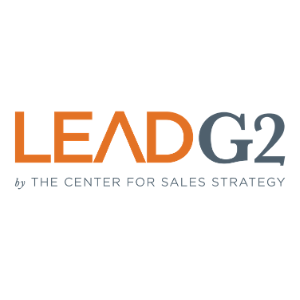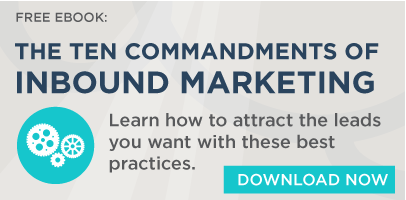Inbound Marketing Commandment #5: You Must Have Someone Responsible
As part of the LeadG2 series on "The 10 Commandments of Inbound Marketing" we will look at each of these ten commandments and why these principles...
3 min read
 LeadG2
:
October 24, 2016
LeadG2
:
October 24, 2016


As part of the LeadG2 series on "The 10 Commandments of Inbound Marketing" we are discussing each of these ten commandments and the importance of each one. Also, we are discussing why these principles are ones that you can’t ignore. The fourth of The 10 Commandments of Inbound Marketing is: You must have a written plan for lead follow up that’s agreed upon by both sales and marketing. (Tweet This)
Each year, companies spend hour after hour developing revenue targets and putting together sales and marketing strategies that detail the specifics regarding how these revenue targets are going to be achieved. I can’t think of any CEO or CFO that doesn’t request a written plan for achieving revenue growth each year. Some even require 3- and 5-year plans. If having a written sales and marketing strategy for your company is essential, why is it that so few companies have a written agreement that determines how leads will be followed up on?
As someone who has worked as a media salesperson and as head of a marketing department, I understand the challenges that both departments are facing. Marketing is focused on generating a high number of quality leads utilizing various methods, while Sales is focused on getting more appointments and moving leads through the sales funnel. However, neither is focused on providing feedback to the other department on how things are going, and in the case of Sales, what processes are being used to follow up on leads.
This is why a written plan for following up on leads is crucial. Without a written plan that identifies what actions are taken after a lead is generated, Marketing doesn’t know for sure if the leads are being followed up on and Sales doesn’t have a way to provide feedback about the quality of the leads or the progress of the leads through the sales funnel. This lack of understanding and visibility regarding how leads are being followed up on is partially why a real or perceived war is taking place between many companies' sales and marketing departments.
The written lead follow-up strategy that we have been discussing is usually included in the Service Level Agreement (SLA) that’s developed between Sales and Marketing that identifies the definition of leads and how the sales funnel works as well as outlines the interactions between the two departments. The SLA’s chief goal is to get everyone on the same page by utilizing a written and agreed upon plan that doesn’t just stop at generating leads but also outlines what happens through the sales process, all the way to a sale.
While SLAs are great for providing a written process, it’s critical that some type of CRM (Customer Relationship Management) tool is being utilized as well. This will help both Sales and Marketing with measuring the success of the SLA and overall lead generation efforts. For years, many small- to mid-size companies were relying on spreadsheets and cobbled together systems to track leads and the sales pipeline. For most companies, the use of spreadsheets as a CRM has disappeared as the prevalence of a company wide CRM has become more mainstream. This increased use of CRMs has partially arisen from the reduced cost of having a CRM. Many companies are even giving away unlimited use of their CRMs or have created a Freemium offering that works well for most companies.
In order to have a successful and smoothly operating sales and marketing teams that work together, a written lead follow up strategy isn’t just a nice-to-have… it’s a necessity.
Make sure to subscribe to the LeadG2 blog to get each of The 10 Commandments of Inbound Marketing and other great blog content delivered to your inbox. Or you can download The 10 Commandments of Inbound Marketing, which includes all 10 of the blog posts and some added content.


As part of the LeadG2 series on "The 10 Commandments of Inbound Marketing" we will look at each of these ten commandments and why these principles...

As part of the LeadG2 series on "The 10 Commandments of Inbound Marketing" we will be discussing each of these ten commandments and the importance of...

As part of the LeadG2 series on "The 10 Commandments of Inbound Marketing" we will be discussing each of these 10 commandments and the importance of...